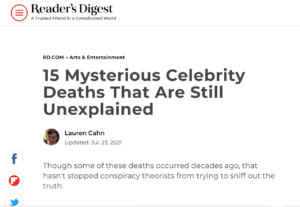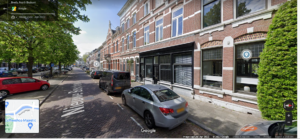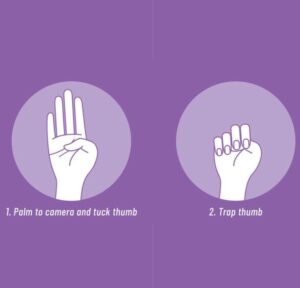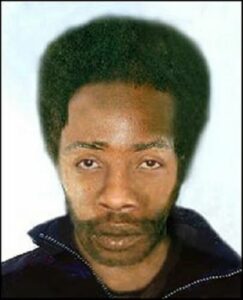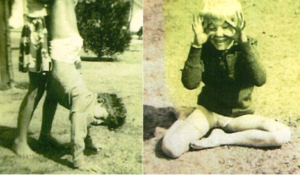Beware of Witnesses When Online Sleuthing: The Murder of Roy Tutill 1968
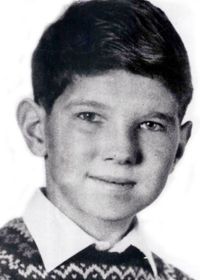
Roy Tutill.
In fiction it is common to miss a crucial detail or two. In Whodunnit movies you never expect to have every single fact and so when the solution comes you don’t mind getting it wrong. There are great novels that you can really get your detective head into. If you get the name of the culprit right…Good for you, if you get it wrong there is no harm done.
Does that same casual approach apply to online sleuthing? I believe it doesn’t. When we publish theories or ideas we should be careful. Out there, reading your words or watching your videos might be a witness. A witness crucial to the case. They might not come forward as what they think they saw is cancelled by your certainty.
Out there are the families of the victim’s who are living with the pain. If you are going to declare a solid theory I ask you to consider how certain are you? How have you arrived at your ‘solution.’ If the bulk of your evidence is based on what witnesses have said…Be extra careful.
The Horrific Case of Roy Tutill 1968
Tuesday 23rd April 1968. Kingston-Upon-Thames, London, United Kingdom.

A 14 year old boy called Roy Tutill was with friends. He had to get home from school to Brockham, Surrey. The distance is about 16 miles. Roy wanted a bicycle and in order to save for it he had a habit of skipping all or some of his bus ride. He would hitchhike the distance if he could. It was 1968, after all what could go wrong?
It is easy to judge hitchhiking people these days. Back then there was a sense of community, of decency and a naïve sense of safety. I remember those times. It might have been a bit delusional yet it had its charms. Of course the reality was there were rapists of children then as there are now. Roy managed to hitch a lift with one of them.
At Bridge Rd, Chessington a bus driver saw a man in a car talking to a school boy. The man was in an Austin Westminster automobile. This is where the story goes wrong and the point I am making about witnesses comes up.
A bus driver by definition spends all day looking at cars and trucks. Back then there were many distinct differences between models. I miss those days. Now a BMW SUV looks like a Seat SUV to me. A hatchback, ultra small VW looks like a tiny Nissan super mini. Here we have an Austin Westminster. It was a common enough vehicle and for its time a lot bigger than an Austin Mini. Not only was it bigger, but the car the bus driver saw was not white. It was far from white. Yet the guy who was convicted by DNA evidence of killing Roy Tutill had driven an iconic white Mini not am Austin Westminster. I mean the two vehicles are not even the same overall shape.
Another witness said an Austin Westminster had been seen close to where the boy’s body was found. So off the cops went. They wanted this horrendous individual found. They checked and checked. They interviewed the owners of such Westminsters. They stopped people who were driving Westminsters. The search allowed Brian Lunn Field to remain free and prey on children.
I don’t accept that the driver of the bus got the car that wrong at all. As I say they spend all day looking at cars. What about this? The driver saw A school boy talking to someone who might well have been his dad. OR the bus driver saw this driver talking to someone who was not a schoolboy but was a school girl. Maybe it wasn’t even a child. Possibly a short male or an adult woman wearing something coloured like the clothes Roy Tutill wore. The bus driver pulls away and somewhere nearby a white Mini picks up Roy Tutill.
Now you have an appeal. It said it wanted to talk to the driver of an Austin Westminster who was talking to a school boy in Chessington on that day. Why would the driver come forward if he had been talking to his daughter or wife or work colleague called ‘Shorty?’
Later the witness at the place where Roy Tutill was found may or may not have seen a similar car but it no longer matters. Without the first sighting the second would not have been of such importance to the witness.
The problem with witnesses (and taking their word as fact) is so many elements can be wrong that will make the whole thing wrong. Time, day, date, what they see, where they are when they see it, the weather, their hurry or any number of things that could fill a page.
Brian Lunn Field was convicted in 2001. A DNA sample had been preserved from Roy Tutill’s trousers. I have nothing but praise for the coppers that collected evidence. Nor do I criticise those that tirelessly looked for the wrong car. It was all they had to go on. However, the emphasis on the Austin Westminster meant that anyone seeing a suspicious situation involving a white Austin Mini might well have kept it to themselves.
Online Sleuthing
In this context avoid taking witness statements as accurate unless they are statements by multiple witnesses. In a 1992 unsolved case I came across a pretty good example. Jacqueline Palmer- Radford was murdered in her home in Hampshire. A suspect car was seen turning into her driveway on the day of the crime. More importantly a very similar car had been seen the day before outside of her son’s school. Both of those sightings might be wrong BUT now we are narrowing down the odds somewhat.
Witnesses can get the wrong day entirely. If we think about what we do everyday.
I walk my dogs on one of three routes. I pass people all the time. Say one of them today becomes of interest in a crime. I will probably not hear about this interest until several days later. So was it today I saw them? Was it four days ago? When I saw them they were not of any interest. I was just walking. So is it likely I would remember them? If I did what time was it? I don’t carry a watch. I leave most of the time for these walks between 10.30 am and midday. Looking back at a stranger I hardly took notice of, on a day I am not sure of, how the hell would I know what time I saw them?
I think like that and maybe you do. So if we were to give a statement we would say we were unsure. Many people won’t admit this. They want to be right. They want to help. Maybe they feel important if they help. Possibly the cops subtly suggest the time because they are desperate for help.
Allowing For The Information We Do Not Have
Later you and I read multiple accounts in newspapers. We check national crime shows. We check other bloggers. Possibly we check the police website. All we are getting is what the police want to release that is filtered via journalists to us.
By the time thousands of people are interviewed. By the time multiple vehicles are traced. By the time the family and friends tell all they are willing to about the victim…Police files are bursting with information we, as writers, have no access to. We have to bear this in mind.
There is no harm in being interested. No harm in letting the puzzle run through our heads. However, we should avoid conclusions. For every theory there is another theory. Just present the facts as you know them. Do that well and that is more than enough.
A Few Thoughts For The Family
Last I like to think of the victim and the victim’s family. Say I read an account and I cannot see how the victim was as moral or correct as they are painted. It has happened a lot when I look at cases. My life experience says that the victim must have been up to something. That something might not be criminal. I see the accounts and I am pretty certain.
I keep it to myself or if I mention it I just mention the inaccuracies of a story not my suspicion. All these cases have family and friends out there. They do sometimes read our humble rantings. I don’t want to come out with stuff that adds to their pain. I don’t want to come out with distortions that might make a witness discount what they might yet tell.
What do you think?
Thanks
Tim
Do you have a case in mind that needs a permanent place on the net?
tim@reasonedcrimechronicle.com
